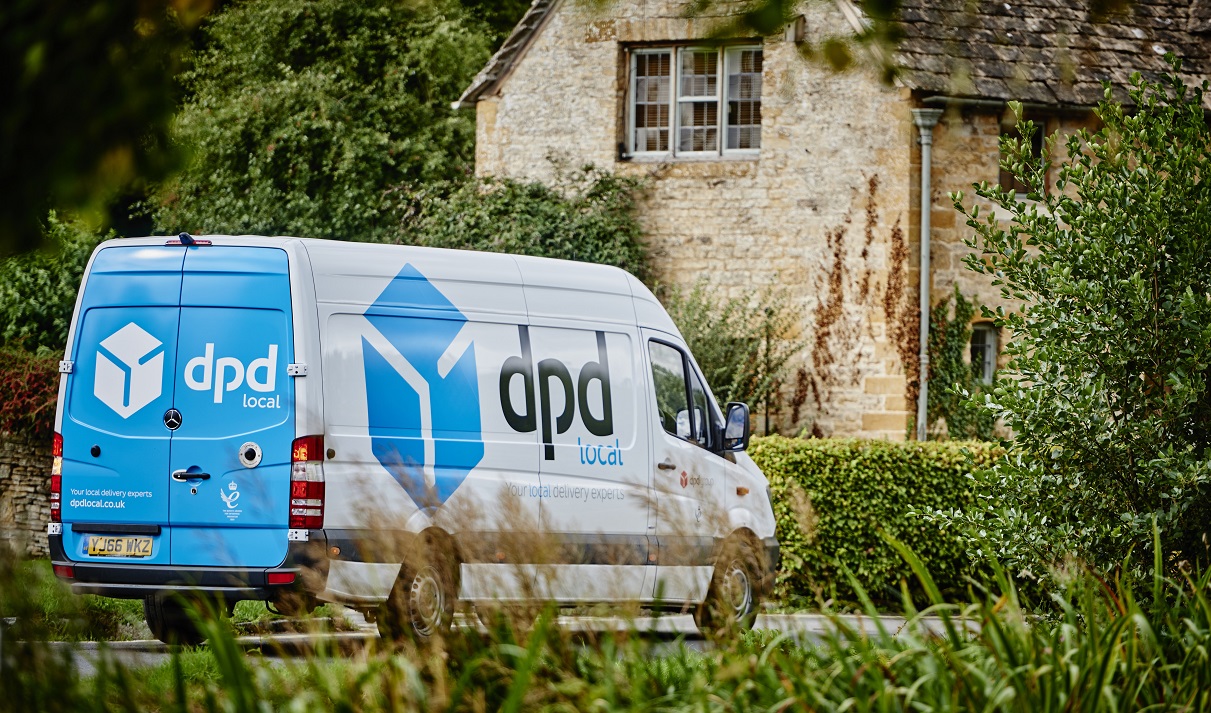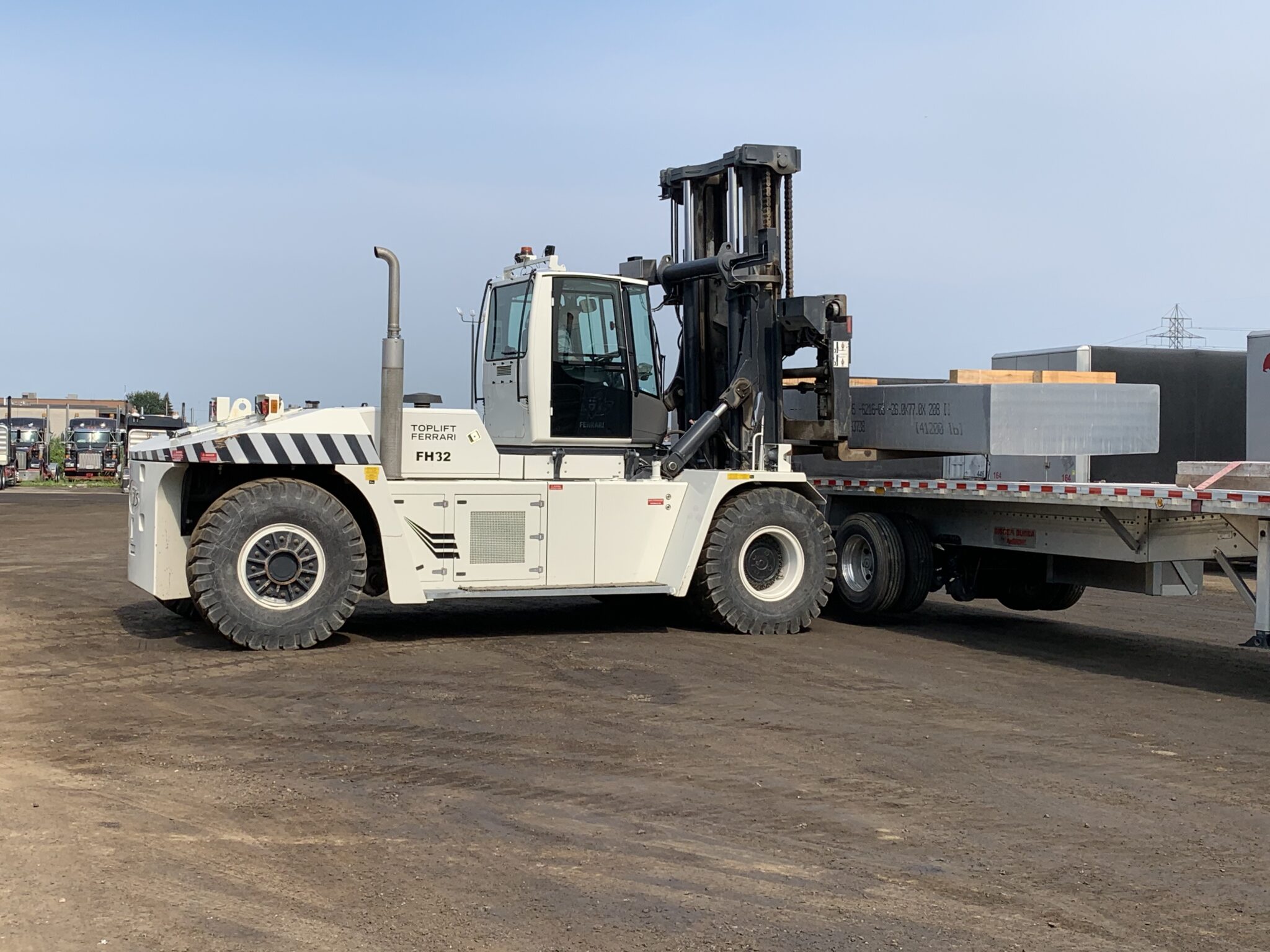When Cameron Paddock of Paddock Transport and David Shea, the president of TopLift Ferrari (TLF), first met at the 2019 Breakbulk Americas exhibition in Texas, they quickly found a common interest.
Both had travelled close to 2,400km to look for new business opportunities at the show. Shea went to Houston to show off the line of new heavy-duty lift trucks that he and his team had recently developed for the North American market, in partnership with Italy’s CVS Ferrari. Paddock was representing his family’s international trucking and logistics firm, looking to expand its presence in the southern states. Coincidentally, he was also thinking of a heavy-lift problem presented by one of his larger customers.
Paddock thought the big, white FH25 lift truck on display at Shea’s booth might be a good fit for his fleet. He and Shea agreed that they would follow up after the show – when both went home to Canada, to the town of Stoney Creek, Ontario. Paddock Transport’s main terminal, it turns out, was less than 5km from TopLift Ferrari’s head office and service shop.
Flexibility to balance storage capacity
Back in Canada, TLF had just received a Ferrari into inventory, and Shea delivered it to Paddock Transport on demonstration. With its 32-tonne lift capacity, the FH32 turned out to be the solution Paddock needed to help its customer.
Located on a main highway between Toronto, Ontario and Buffalo, NY, the Paddock terminal is in the heart of Canada’s steel country. The trucking firm specialises in “goods needing extra care and attention,” including oversize steel coils on delivery from local mills to manufacturers in the US. The Paddock terminal is a major logistics hub in the region, with 13,500 sq m of covered warehouse space surrounded by 6ha of outdoor storage.
As Cameron Paddock explains: “One of our challenges is balancing our storage. Our lift capacity sometimes forces us to store heavier materials indoors, even though the customer doesn’t need indoor conditions.” The warehouse is equipped with overhead cranes handling up to 36 tonnes – strong enough to unload and store steel coils as heavy as 34 tonnes. One of the nearby steelmakers had been stockpiling inventory and looked to Paddock to take on extra stock. However, Paddock’s largest lift truck was limited to a 16-tonne capacity.
Although Paddock’s outdoor storage could easily accommodate the big coils, the facility had no way to offload and move the material without the indoor cranes.
“The FH32 is an important upgrade for us,” says Cameron Paddock. “It gives us the flexibility to use our outdoor and indoor capacity as needed. It’s able to lift 27-tonne coils right off the truck, move around in the yard and store it anywhere we want it.”
“Effortless” handling of oversize loads
The new Ferrari truck brings more than just muscle to the Paddock warehouse. Its agility and control are simplifying and expediting operations throughout the terminal.
“Before we had the TopLift Ferrari FH32, we could spend 15 minutes with two guys rigging the cranes for these lifts. Now, this fork truck can do the same job in about 30 seconds. As soon as the “32” arrived, we put a coil prong on it, and we were able to quickly bring in that large inventory of our customer’s oversize coils. The Ferrari made light work of it. Instead of using the indoor crane to move the coils, we just drove up, picked it up and moved wherever we needed to in order to maximise our facility. And it’s as easy as picking up a 1 tonne pallet off the back of a tridem trailer. Effortless!”
Heavy, over-dimension loads are at the core of Paddock’s business. The ability to transload efficiently is a key competitive advantage, handling goods and equipment for aerospace, automotive, construction, and military sectors as well as the steel industry.
Transloading for efficient logistics
“We are on the crossroads between the high load limits allowed in Ontario, Quebec, and Michigan, connecting to roads with reduced weight limits. We regularly bring in one trailer from Michigan or Quebec, and then we split it onto two trailers to cross into New York and points south. Going the other way, we can receive two trailer loads from the US and transfer them to a single B-train or a multi-axle for delivery in Ontario or Quebec.”
Paddock’s focus on large, specialised loads is reflected in the firm’s fleet of more than 350-plus company-owned trucks and trailers including floats, step-decks, double-drops, and custom units running on up to 13 axles. The firm’s logistics team pulls it altogether, matching equipment to the required loads and routes. Transloading to take advantage of high limits can mean significant savings for customers. Now, with the new Ferrari lift truck, the terminal operations that pull it together are simpler and more efficient than ever.
“What drew us to the Ferraris at the show is that they are simple where they need to be. They are not overly complex. They use larger cylinders in their steering, have great visibility and a well laid-out cab – not a lot of crazy gadgets for the operator to learn.”
David Shea says that simplicity and control were the primary goals when TLF was specifying these machines: “We paid special attention to having the machines run cool; even in Canada, machines running in summer can have issues with overheating. We added extra cooling, hydraulic filtration, and transmission cooling. Cool, clean hydraulic oil is the secret to the long life of the machine.
“Our Cummins engines and off-the-shelf components keep the machines simple to own and maintain, too. We built with Clark and ZF transmissions, Kestler drive axles, Bosch Rexroth hydraulics; all the best you can buy. Our philosophy is, get the best components and put them together in a way that they’re easy to service: you’ve got a good machine.
“And we were very conscientious with visibility. This is a large machine, but the cab is positioned in such a way that you can clearly see past the mast and you can see all four corners without relying on mirrors or cameras. That not only helps the operator manoeuvre loads, it’s a critical safety factor for a machine this big.”
Cameron Paddock agrees and notes that his operators appreciate the visibility in the FH32. “We have a 5.5-tonne machine that has a quarter of the visibility of this one. It’s a big deal. It’s not like bumping up to the rubrail of a truck with a 2-2-tonne forklift. The 32 weighs over 18 tonnes itself – you could knock over a whole row of trailers if you’re not careful! Visibility and responsive controls are a big part of its safety. It has the visibility and good steering. You put on the brake and the thing stops!”
In good hands
The FH32 has performed well enough that Paddock has since added another Ferrari unit, a TFC36-48, to its fleet. David Shea recalls: “We had it in inventory when Paddock sent us a different forklift for repair work. We loaned the TFC36-48 to them to fill in till the work was done. After a couple days, they called up to ask if it was for sale!”
“We’re in good hands with the TopLift team,” says Cameron Paddock. “They are very well known around southern Ontario, just down the street is definitely an asset. But we’re very confident in the Ferrari machines on their own merit. In our transport business, we have used virtually every brand of forklift out there. We get to see them in both new and used condition. We see where they’re tired and where their weak spots are.
“Just looking at them, you know the Ferraris are well designed and well built. The two Ferrari machines we have now are handling 50 trucks a day, plus. Were we to expand our operation or open another facility, we would definitely be looking at another Ferrari from TopLift.”






